Olympus Tokyo Executive Interview: A (little) more insight on the sale of the Olympus Imaging Division
posted Friday, July 17, 2020 at 7:20 PM EDT

Any photographer with an internet connection will be aware of the coming sale of Olympus' Imaging Division to private equity firm Japan Industrial Partners. There's been rampant speculation as to what this might mean for the Olympus line of cameras and lenses, and there is still quite a bit of uncertainty, even after the publication of recent interviews with Olympus executives.
I had the opportunity to speak yesterday with Mr. Ayataka Kiyomiya, the Vice President of Global Marketing Planning for the Olympus Imaging Division, to try to clear up some of the questions.
As you might expect in any situation involving a pending corporate sale or merger transaction, the information Mr. Kiyomiya was able to share is very limited: Olympus Corporation is a publicly-traded company, so information disclosures about prospective sales and mergers are subject to security laws. Corporate management has to be very circumspect in what's said when, to avoid wild fluctuation in the stock price, and even scrutiny from authorities.
At the same time, though, Olympus clearly needs to reassure the market, their customers and their employees that it's all for the best and everything will work out somehow.
It's really an impossible task, and the net of it is that an awful lot is undefined, and will continue to be so until Olympus Corporation and JIP arrive at a definitive agreement.
Despite these factors, though, I did manage to get a bit more clarity on some aspects of the sale, and can perhaps read between the lines a bit to guess some more.
(If the answers here seem very carefully worded and purposely vague in many areas, it's almost certainly because they are: I'm sure Kiyomiya-san's replies were carefully vetted by Olympus Corporation's legal department to say exactly what's allowed and nothing more.)
Here are the questions and answers from the interview, with my own thoughts and comments interspersed throughout, as well as things that came out in response to my followups, set off in italics:
How will this affect product development plans?
Dave Etchells, Imaging Resource (DE): To begin, what can we expect in the very near term (through 2020, say) in terms of product releases? I know that cameras and lenses have long development cycles, so there are almost certainly products already in the pipe that would normally have been introduced in the remainder of this year. We know that the 150-400mm PRO lens is still slated to be released, but will there be other products, or have those plans been put on hold, for the sake of cost savings?
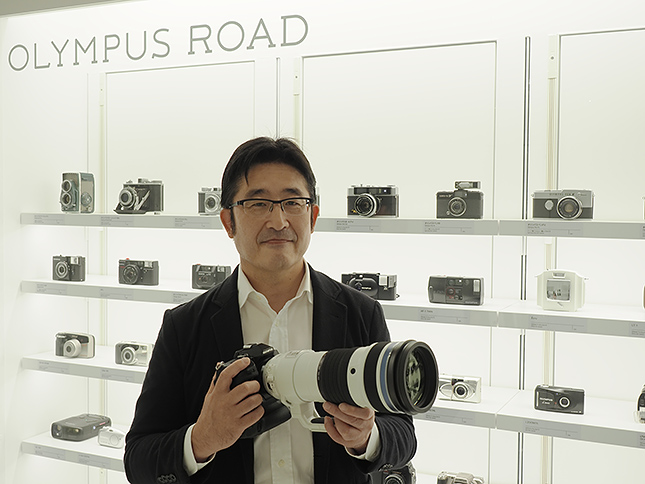
Ayataka Kiyomiya, Olympus Imaging Division (AK): First of all, I want to be clear that there is no plan to withdraw from the imaging business with this transfer. We will continue to develop high-quality camera systems which offer unique values. Also, there are no plans to change our new product launch plans in 2020 due to the transfer. The development of 150-400mm PRO is well underway so please stay tuned for exciting news."
DE: Looking beyond 2020, what will be the fate of other products that are in earlier phases of development? How long will the product lines stay “fresh”, with regular releases, based on what Olympus already has under development?
AK: We will continue to focus on the high-end market and, in the ILC product lineup, we will strengthen mid to high-end cameras and lenses. We have no plans to reduce the number of models unless there are strategic reasons to change the product line-up.
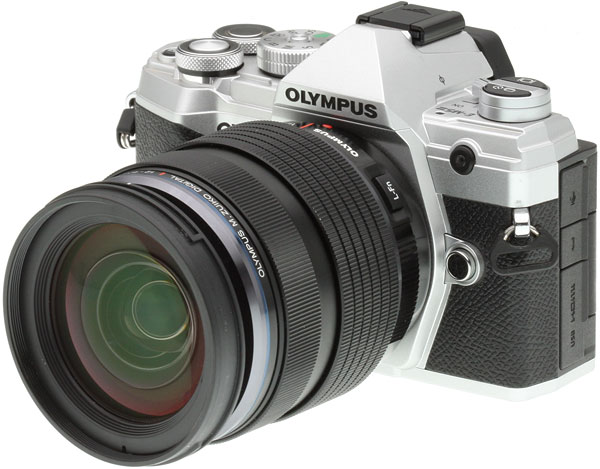
While the prepared answers here were as carefully vague as the rest, I did manage to gain a little clarity in terms of what Olympus means when they say that they'll concentrate on "high end" models. Many have taken this to mean only the E-M1 Mark III and E-M1X, but when I pressed for more definition in the conversation itself, Kiyomiya san made clear that the term "high end" was relative, and meant more of an emphasis on the higher end of their product line. He clarified, saying that they were talking about mid-range to upper, and when I asked specifically about the E-M5 Mark III, he indicated that it was part of the category that they saw as key to their future.
It was very clear from our conversation that high-end did not mean a focus only on professional users. (See my notes for a subsequent question below about product lines for the role of products like the E-M10 series or PEN line.)
While he couldn't comment on specifics, my thinking behind the question about product releases based on existing R&D work has to do with the long development cycle for cameras and to a lesser extent lenses. Even if Olympus stopped initiating any new product R&D projects today (and let's be clear, they are emphatically saying that this is not the case), it would be a couple of years before that would appear in the form of a dearth of new features in their product lines. There's a longer discussion to be had, and counterpoints to be made, but the net of my thinking is that it's unlikely that we'll see an abrupt stop to product development.
What's actually happening, is this a sale or a joint venture?
DE: The news release from Takeuchi-san described the transaction in a way that sounded more like a partnership or joint venture with Olympus and JIP -- for instance "by carving-out the Imaging business and by operating the business with JIP..." and "...By adding support from JIP, the NewCo, as the successor of reputable brands such as “OM-D” and “ZUIKO,”..." Can you give more details on the nature of the relationship? Will "NewCo" become a completely standalone company for the OM-D and Zuiko brands going forward, will it be a subsidiary company that’s still a part of the larger Olympus Corporation, or will it be a true joint venture?
AK: Let me explain about this business transfer clearly. With this transfer, the Imaging business will be split from Olympus to become a completely standalone company. It will not be either a partnership nor a joint venture.
We believe that splitting the Imaging division to develop a more compact, muscular and agile organizational structure, and developing business under JIP (Japan Industrial Partners) will realize our autonomous and sustainable growth for the future.
JIP has extensive experience with "strategic carve-outs," where it supports companies in the process of relinquishing businesses or subsidiaries, providing the necessary investment to accomplish the business's growth potential as independently operated entities, which is why we believe JIP is an optimal partner.
We believe this transfer is the right step to preserve our technologies, our products and services and the Olympus brand legacy. We are very confident that we can continue to offer products to satisfy our customers in the new environment.
From the initial announcement, I'd had the impression that this might be a joint venture of some sort, given the language "operating the business with JIP". Other parts of that announcement talked about a completely new company though. Kiyomiya san clarified that the new entity will be completely separate and standalone. Looking back at other details in the official release, it seems that the process will be: 1) Olympus will transfer its imaging business to a temporary legal entity, referred to as "NewCo." 2) Perhaps simultaneously, JIP will establish an entirely new and separate company, under their ownership (call it JIPco for now). 3) Olympus will transfer its shares in the NewCo entity to JIPco. At that point, the new company JIPco will own the Imaging Division outright, completely independent of Olympus.
Will this shore up Olympus Corporation's corporate finances?
DE: Will this transaction result in positive cash flow or capital recovery for Olympus Corporation? (That is, will there be a purchase transaction, or will it be a matter of Olympus simply contributing its existing assets to NewCo in exchange for an equity position?)
AK: We cannot discuss details of the arrangement, but the shares of the new company will be transferred from Olympus to JIP. While Olympus is proceeding with a change towards transformation into a global med-tech company, our Imaging Division is aiming for self-sustaining business growth with a new organization that is more lean, efficient and agile. As a result of a comprehensive examination from various aspects, we believe this transfer is the optimal decision for both of us.
This was another question I didn't really expect an answer to at this point, but it'll have an impact on the success of the new company. Ideally (for photographers), Olympus will just transfer the assets of the Imaging Division into NewCo, with no payment or debt obligation coming back the other direction. That would give NewCo a running start, and the ability to turn any cash flow to their immediate advantage. On the other hand, if money flows back to Olympus, that'll be a drain on NewCo's finances and make it tougher to keep their heads above water. One way or another, we'll find out when the Definitive Agreement is signed with JIP, currently targeted for September 30 of this year.
How is manufacturing going to be handled? Will Olympus contract with JIP for that?
DE: Camera and lens manufacturing is very specialized, and to the best of my knowledge, JIP doesn’t have any such capability of their own. As far as I know, there isn’t a separate camera/lens factory that could be sold off to the new entity as part of the deal; your Vietnam factory produces both cameras and medical devices. Will Olympus lease space and equipment within that factory to JIP, or is it more likely that you will contract with JIP to handle the manufacturing for them?
AK: We cannot comment at this moment as we just agreed to a non-binding MOU [a Memorandum of Understanding, a public statement that two parties are willing to move towards a contract], but please be reassured that there won't be any problem with production. NewCo will continue to provide high-quality and reliable products.
This is a pretty key question that could have a significant impact on the long term health of the new organization, depending on how it's carried out. The bottom line is that someone, somewhere is going to have to manufacture the products, and that's all currently being done in the main Olympus factory in the Vietnam province of Dong Nai. Constructed in 2008 to produce camera lenses and medical endoscope parts, Olympus transferred all their camera production there from China in 2018-2019. This significantly reduced Olympus' cost of manufacturing, thanks to the highly-skilled, young and inexpensive Vietnamese labor force. I don't know the structure and physical arrangement of operations there, but it's extremely unlikely that JIP would try to move a well-established and efficient factory operation somewhere else. It seems unlikely that Olympus could sell part of their factory to JIP; my guess is that they'll either lease the space and facilities to JIP or continue to run the manufacturing for JIP on a contract basis. The terms of whatever arrangement is arrived at will obviously be a critical factor in the profitability of the new company. Here again, though, we'll have to wait for the Definitive Agreement to know how it'll be handled. (Of course, NewCo/JIPco can't exist without a solution for manufacturing the products, so some sort of arrangement will obviously be made. It'll be interesting to see what that is.)
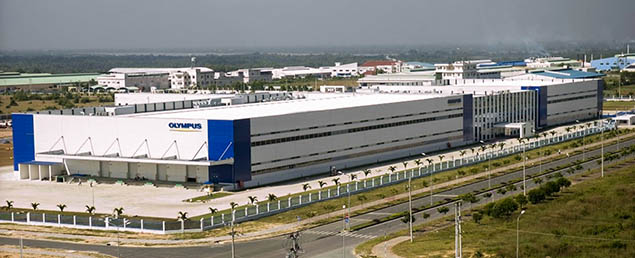
What will happen to the Imaging Division's R&D contribution to the rest of Olympus?
DE: A bigger strategic question in my mind is how Olympus’ deep R&D resources will be handled or allocated. In multiple interviews over the years, Olympus executives have always stressed that the Imaging Division was a technology driver for Olympus’s medical and industrial products. Can you describe how Olympus’s R&D resources will be reorganized and allocated between Olympus Corporation and JIP?
AK: As we explained before, Imaging Division has played a role as a technology driver for the entire company. With the transfer of business this time, Imaging Division will be separated, but the technology and know-how related to business management processes cultivated up to now has been transferred to medical division.
I also asked if there might be any cost-sharing of R&D between Olympus and NewCo/JIP. Perhaps unsurprisingly, the reply was that they can't comment, as they'd just signed the MOU (Memorandum of Understanding) with JIP. I thought Kiyomiya san's reply here was telling: Olympus has said for years now that the Imaging Division was a technology driver for their medical and scientific products, and hence important to the company as a whole. It seems like they've now decided that that's either untrue, or at least not worth the cost associated with it.
I sense in this the hand of activist investor ValueAct Capital, a hedge fund that bought ~5% of Olympus' outstanding stock back in 2018. ValueAct is a private US hedge fund with a history of acquiring major positions in companies they see as ripe for change as a way to improved profits. (Their acquisition of 1% of Microsoft stock in 2013 and subsequent agitating for a seat on the board was said to have been one of the reasons Steve Ballmer left that company.) There's no question in my mind that Olympus corporate management did feel that the Imaging Division was important to them, but any company is ultimately at the mercy of its shareholders, and an investor like ValueAct can hold enormous sway. In January of 2019, they succeeded in forcing Olympus to accept three foreign board of directors members; that's the point at which the writing was truly on the wall for the Imaging Division.
There might be a silver lining in this, though, in that getting the Imaging Division out from under ValueAct's thumb could make it easier for it to in fact become profitable on its own. With three board directors inclined against it, the Imaging Division must have faced strong headwinds within the larger organization. While they still have to solve the puzzle of profitability, it may well be easier to do so as a standalone company, with all of the management and the board focused in a single direction.
Could Olympus leverage their expertise through contract manufacturing, to improve cash flow?
DE: To what extent does the Imaging Division currently do contract manufacturing for other companies, whether in the photo industry, or other areas? (I know you probably can’t name any such partners, but can you comment on the extent to which that sort of relationship is part of your current business model?) Do you see contract manufacturing (or contracted R&D/product development) being a way that Olympus Corporation can extract value from the capabilities that you’ve developed?
AK: Unfortunately, we cannot disclose any information about contract manufacturing.
DE: Taking a 50,000-foot (~15,000-meter ;-) view of the basic technology, a general issue with Micro Four Thirds cameras is that much more sensor product development happens with APS-C and full-frame technology. With even smaller camera manufacturing volume than Olympus has currently, how will NewCo/JIP manage to stay current in terms of having the latest technology available for their designs?
AK: We cannot comment on the details at this moment as we just agreed to a non-binding MOU, but please be reassured that there will not be [any] interference with R&D, whatever happens.
Again, no comment/no surprise :-/ As I noted above, I wouldn't be surprised if Olympus ends up handling the camera and lens manufacturing on a contract basis going forward. I also suspect that Olympus does contract manufacturing for other companies, particularly in the area of optics. (No firm information, just a sense from years of conversations with Olympus executives.) Could this be expanded in the future? If so, it could help offset some of the drive for capital recovery from the manufacturing facilities and equipment. We'll certainly find out what the arrangement will be with JIPco for camera and lens manufacturing, and it's equally unlikely that we'll learn anything about other contract manufacturing relationships (they're usually very confidential), but I was hoping to get some sense of whether Olympus management was looking towards contract work as a possible direction for cost offsets.
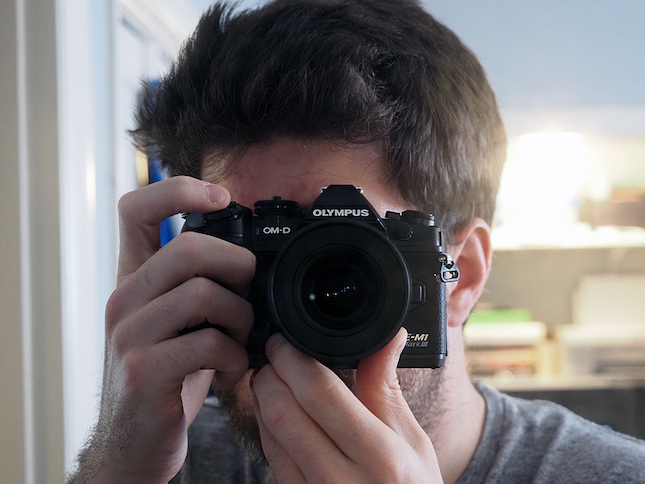
What will become of the Olympus brand?
DE: Will the Olympus brand continue to be attached to future camera developments? The initial press info seemed to suggest that OM-D and Zuiko will continue as brands, but perhaps separate from the Olympus name.
AK: Yes, our camera brand names such as "OM-D", "PEN, and "ZUIKO," will continue to be used. In terms of Olympus brand name, it is currently under discussion but there is no plan to stop the Olympus brand immediately after the transfer.
This is basically the same information that's been given to others. It's 100% certain that the various product-line brands will be continued. I personally think they'd be foolish to drop the Olympus name entirely, given its decades of familiarity to photographers. FWIW, I think it's a very different situation with the Olympus name and photography than it was with Sony and computers. People bought VAIO computers; the Sony name itself was really secondary. Sony is certainly a strong consumer electronics brand, but I don't think that translated into any particular expectations for their computer products. By contrast, Olympus as a camera brand dates back to 1936.
Why the spinoff? Why couldn't this have been done within Olympus' existing corporate structure?
DE: It’s clear both from the wording of Takeuchi-san’s news release and the condition of the market in general that NewCo/JIP will need to make very significant cuts to reduce expenses. How will NewCo manage to be profitable, where the Imaging Division couldn’t? Why couldn’t the necessary cuts be made within the existing Olympus structure?
AK: To explain the background of this transfer, Olympus has charted a course toward transformation into a global med-tech company in order to achieve sustained growth.
Although Olympus operates in Medical, Scientific Solutions and Imaging segments, our strategic resources are concentrated in Medical. Given that, we cannot allocate enough resources to Imaging.
In order to realize Imaging Division's autonomous and sustainable growth and its return to profitability requires more drastic profit structure reforms that can enable self-sufficiency. Also, we have to move rapidly to transform its organizational structure into one that is more lean, efficient and agile.
We cannot disclose the details of our plan to be profitable at the moment, but with the support of JIP, we believe it is the best step to realize the growth of the imaging business and continue providing our value to customers and employees working for it.
For this transaction, we will carry out structural reforms in our Imaging Division, and plan to spin off after establishing a business structure that is expected to be profitable.
It's purely my interpretation and speculation, but I sense two factors at play here: 1) It can be very difficult to make truly radical cuts and realignments within an established corporate structure; it's often easier to simply create a new, leaner and more focused structure in its place. Spinning off the Imaging Division will allow them to create an entirely new structure that could indeed be much more efficient. 2) I see ValueAct's hand at work, wanting Olympus to focus solely on their very profitable medical business. It's very much in line with ValueAct's past activities, and a classic activist-investor move; shed unprofitable businesses and increase the value of the core. Ultimately, as photographers, our interests are very much aligned with NewCo's; for the line to survive, it has to become profitable. Olympus has made major strides in improving efficiency in recent years, but they've still been losing money. I think there's a profitable core there though, and tend to agree that a carve-out of this sort is probably the best way of maximizing its potential.

Trying to get a little more insight on the fate of various Olympus product lines...
DE: As an extension to that question, can you comment on the relative profitability of the various Olympus product lines over the past several years? To what extent have OM-D, lenses, PEN and TOUGH been either positive or negative influences on overall profitability? Can you comment on which product lines may be discontinued?
AK: Of course, there are differences in profitability depending on the product lines. However, the role of each model [line] is different and it is not simply to make a short-term sales profit, but also it [involves] expanding the user range [for a] mid-to-long term contribution towards the brand. We will continue to study the product lines on the basis of overall judgment.
DE: Is it possible that any discontinued product lines might be licensed to third parties?
AK: We cannot comment on the details at this moment as we just agreed to a non-binding MOU.
Hah, again no real surprise, but I have to ask, right? I was trying to find a way to weasel-out a bit more insight about where different products might stand. While I didn't get the sort of information I was hoping for, the answer I did get was still revealing. While Olympus has consistently talked about focusing on higher-end products, Kiyomiya san made clear that the equation isn't simply about which lines generate a profit in the near term; they have to consider longer-term strategy as well, and look at how people are first introduced to their system. Someone buying in with an E-M10 Mark III or even a PEN model becomes a prospect for lens sales and for higher-end bodies in the future. So it may well be to Olympus' (or NewCo's) benefit to sell lower-end models even if they aren't immediately profitable. My sense from this and other discussions is that Olympus' lens business is a strong profit center, so getting people onboarded is important in the long run, even if it has some cost in the present. So bottom line, it's not a foregone conclusion that products like the PENs and E-M10 series will die out.

What about repairs and warranty coverage for existing product lines?
DE: What can consumers expect in terms of product support for existing product lines, including those that may be discontinued? What plans do you have to provide ongoing service and repair for existing products? Will service be dropped for any lines?
AK: The transfer is not expected to affect repair services. All Olympus users are able to use Olympus products with confidence continuously.
This is obviously an important consideration for anyone involved with the Olympus ecosystem, whether new or existing users. Alas, it's also one of those issues that will depend on JIP to work out, and so one that we won't have clarity on until at least the time of the Definitive Announcement. That said, it'd be suicide for JIPco to not have a strong service offering. And it's worth noting that this doesn't have to happen only through official Olympus facilities. There are still competent third-party service and repair organizations who'd be capable of servicing Olympus products if they were given access to parts, tools and procedures. So details TBD on this topic as well, but it's clearly critical.
Is this going to be a replay of JIP/VAIO? Will the new company still serve the same worldwide markets?
DE: Will NewCo continue to serve the same regional markets that Olympus did? (We ask this because after JIP acquired the VAIO computer line from Sony, they ended up initially withdrawing from international markets. As far as I know, VAIO computers are still being sold, but primarily in Japan and possibly a few other Asian countries.) What’s the future of the Olympus camera and lens system globally?
AK: We plan to continue to sell the products and provide services in the international markets.
I pressed quite a bit on this point in the conversation, emphasizing that it would be a bad outcome if the Olympus product line ended up only being available in Japan, for example. Kiyomiya san replied more emphatically that there were no plans for there to be any changes in international distribution.
Of course, having "no plans" for something doesn't mean that it won't happen. (As witness previous responses by Olympus executives that there were no plans to sell the Imaging Division.) Reading the tone of his reply, he did seem more emphatic on this point than others. In making that observation, it's also worth noting that he's the VP of Global Marketing Planning...
What does this do to the Micro Four Thirds consortium?
DE: How will the divestiture of the Olympus Imaging Division impact the Micro Four Thirds Consortium?
AK: The transfer does not affect Micro Four Thirds standard. We would like to continue working with other supporting manufactures to spread the MFT standard.
Another case where I didn't really expect a different question than I got. For my part, I hope that MFT continues to be well-supported. It's one of the more successful multi-company partnerships I've seen, with a wide range of camera bodies and really exceptional array of lenses between Olympus, Panasonic, Sigma, Cosina and Kowa, and with specialty makers Yongnuo, Mediaedge and Venus Optics recently added. Looking at the players, and particularly with Blackmagic involved on the Cine side, I think there are good prospects for the platform to continue well into the future.
Why JIP? Was there any consideration of selling the Imaging Division or its brands to another camera manufacturer?
DE: What were the considerations in partnering with JIP for this? Were there discussions about selling the Imaging Division or the OM-D/Zuiko brands and/or intellectual property to another camera manufacturer?
AK: The markets for digital cameras are rapidly contracting due to the evolution of smartphones and tablets, and competition is intensifying in the mirrorless interchangeable lens camera segment.
In order to respond to this market environment in the digital camera market, we have been working to create a business structure that can sustainably generate revenue even if sales shrink, such as reforming the profit structure by reorganizing our production bases, choosing key markets, and strengthening our highly profitable interchangeable lenses.
However, due to the difficult business environment, we have not been able to improve profits as a result.
And this time, we believe it was the optimal decision for customers who chose Olympus products, employees, and for Imaging Division's self-sustaining business growth to spin-off [Imaging Division] to transform its organizational structure into one that is more lean, efficient and agile.
JIP was an obvious choice, given that they previously took over a mobile telecom unit (ITX) from Olympus back in 2012, and they generally have a history of turning around companies they acquire as part of carve-outs like this. Olympus has a lot of very well-developed technology that you'd think would have value to other camera makers, but (a) they mostly have their own tech in various areas, even if Olympus might be stronger in some areas, and (b) none of the other camera makers exactly have spare cash lying around these days. JIP at least is positioned to provide capital, although the details of how and how much are obviously TBD at this point.
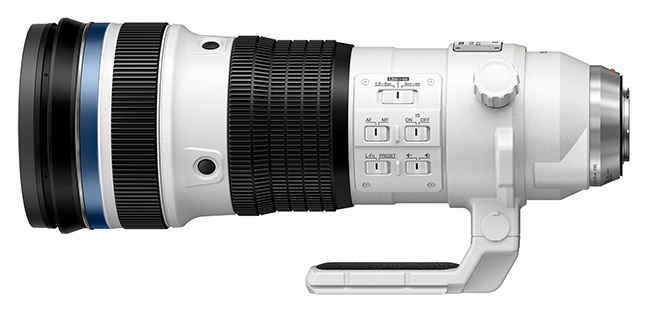
How do you make the case for people to continue investing in the Olympus, OM-D and Zuiko brands?
DE: Probably the biggest question of all, at least in consumers’ minds, is whether they should invest or continue to invest in OM-D and Zuiko products. What can you tell the market, to convince them that they should continue buying into the system?
AK: We would like to tell to the market and customers clearly that we [will] continue this imaging business. We [will] develop new products, deliver them to market, and serve repair services as usual. There are no changes in new product plans, and we are going to introduce new products as planned.
Earlier this month, we disclosed the updated lens roadmap as a continuous commitment to our customers. The 150-400mm PRO lens and new E-M1X firmware containing Bird-Detection AF are being developed as planned.
And in addition to the uniqueness of our compact and lightweight system, we have many technologies that competitors cannot follow easily, such as strong I.S., high-resolution lenses and outstanding dustproof and splashproof capabilities.
We will continue to work hard on conveying the unique values of OM-D/PEN system continuously, even after the transfer, so we would like our customers to stay with us with confidence.
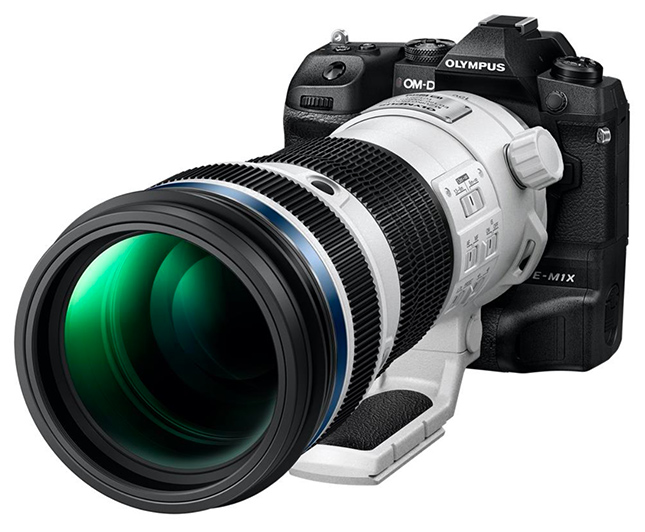
Summary and (in)conclusion
As we like to say here in the US, that last one is the $64,000 question: How can Olympus convince people that their camera and lenses will continue to be safe investments?
One answer is along the lines of my earlier question, namely that there are already products in the pipeline that will continue to come out for some time yet. Kiyomiya san pointed to this in mentioning the 150-400mm lens and new E-M1X firmware, and his statement earlier that all other plans for 2020 product releases are on-track. JIP will want to maximize the return on R&D investments already made by Olympus, so it's hard to imagine that a significant amount of the current product pipeline won't make it to market; that buys at least a couple of years. He also points to Olympus' unique position in the market, with a very compact and lightweight system, excellent IS and lenses, and class-leading weather resistance. When you look at it, Olympus has a more clearly-defined market niche than pretty much any other camera maker. For people who want what Olympus is selling, there really isn't anything else on the market that matches it. Whether that's enough to sustain a camera company long term remains to be seen, but I personally believe there's a very strong value proposition behind the Olympus line, one that could in fact support a much trimmer, leaner organization in the long term.
The ultimate puzzle for JIP and the new company to solve will be how to effectively make the case for the value proposition that the cameras and lenses present, and how to continue to draw new people to the platform. From my experience, Olympus shooters are quite passionate and loyal to the brand, appreciating it for the capabilities, ruggedness and portability it gives them. It'd take a lot for most Olympus owners I know to abandon the platform, and they're also the type who'll continue buying (very profitable) lenses to add to their collections. The real key will be to convince new users to come on board, and that's something we'll only be able to watch play out over time.
In the meantime, the market is a bit on hold until the Definitive Agreement is finally signed, hopefully in just a couple more months. Until that happens, we're not likely to get more information than Kiyomiya san shared above; that's just the nature of corporate sales, mergers and carveouts. Fortunately, it's a pretty short interval, and you can be sure IR will be on top of it when it happens.
What about you personally? If you've been considering buying into the system, is this development giving you pause? If you're an existing Olympus shooter, are you concerned, or is it business as usual for you? I'd be interested to know your thoughts!